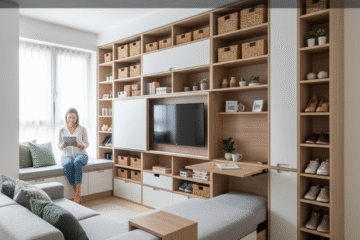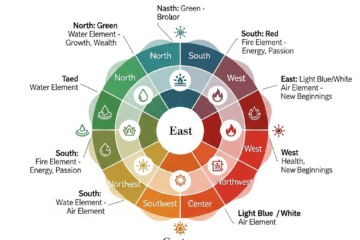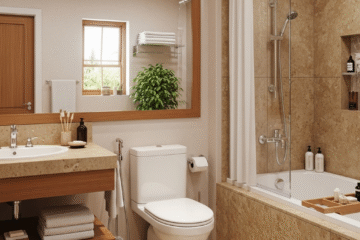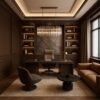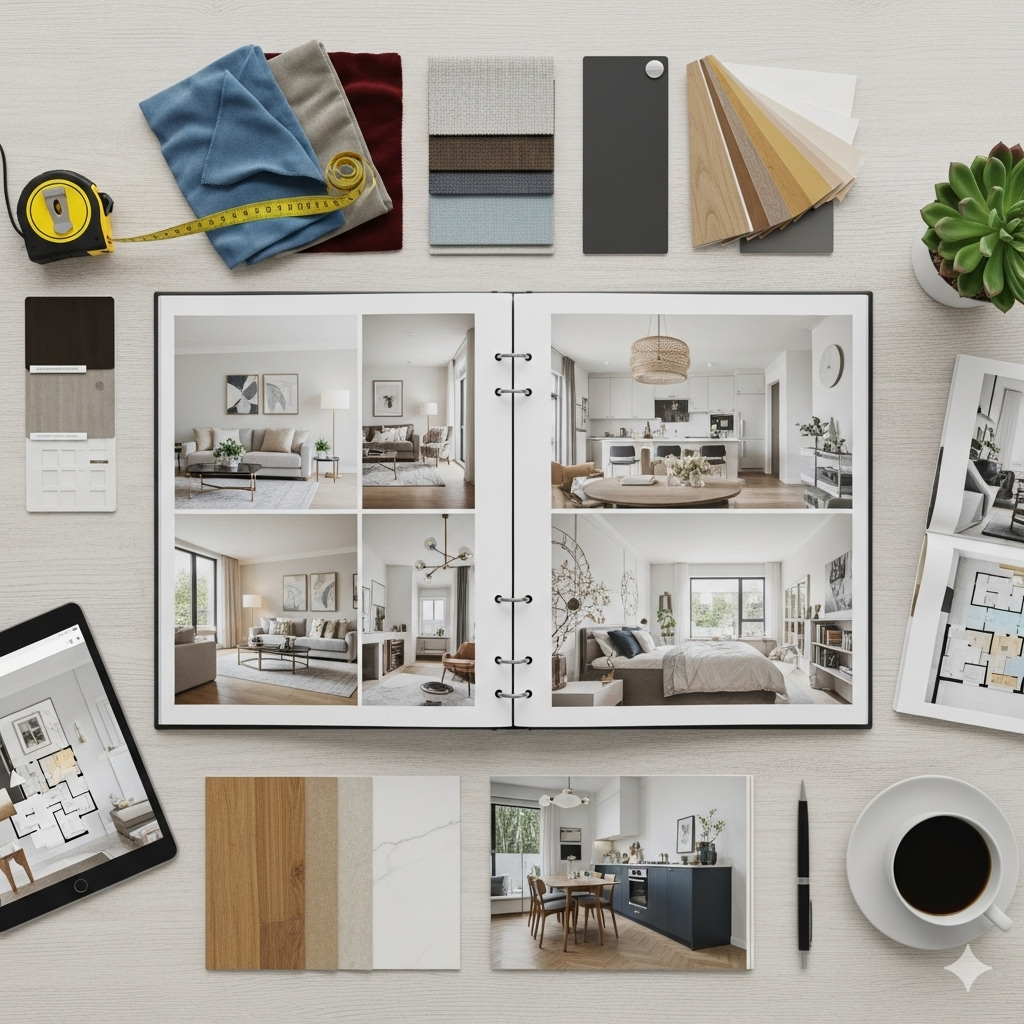
Portfolio Building Tips for Interior Designers – Build a Strong Brand with InteriorGrid.com
For any interior designer, the portfolio is more than just a collection of images—it is the brand identity, the proof of creativity, and the first impression that potential clients see. Strong portfolios open doors to high-value projects, collaborations, and recognition in the competitive design market. That’s why mastering the right portfolio building tips is essential for every professional who wants to stand out.
InteriorGrid.com, a trusted platform for design professionals, understands how portfolios work as business magnets. A well-crafted portfolio not only highlights design work but also tells a story about style, process, and problem-solving skills.
Table of Contents
Ready to showcase your portfolio on InteriorGrid.com?
Join today and attract more clients.
Why Portfolios Matter for Interior Designers
Clients rarely hire based on promises alone. They want to see tangible proof of past work and the creative direction of a designer. This is where portfolio building tips come into play. A strong portfolio:
- Effective Portfolio Building Tips – Build a Strong Brand with InteriorGrid.com are essential for interior designers who want to establish credibility, attract clients, and grow their brand. A well-crafted portfolio not only demonstrates design skills but also communicates professionalism, versatility, and problem-solving capabilities. Following strategic Portfolio Building Tips – Build a Strong Brand with InteriorGrid.com ensures that every project highlights strengths and appeals to potential clients.
- Builds Trust and Credibility
- The first principle in Portfolio Building Tips – Build a Strong Brand with InteriorGrid.com is building trust and credibility. By showcasing completed projects with detailed descriptions, before-and-after visuals, and client testimonials, designers can establish confidence in their skills. Implementing these Portfolio Building Tips – Build a Strong Brand with InteriorGrid.com makes clients feel assured about working with you, enhancing professional reputation and reliability.
- Showcases Design Expertise Across Styles and Budgets
- A strong portfolio demonstrates design expertise across different styles, themes, and budgets. According to expert Portfolio Building Tips – Build a Strong Brand with InteriorGrid.com, including a variety of projects—from minimalist apartments to luxury homes—highlights adaptability. Using these Portfolio Building Tips – Build a Strong Brand with InteriorGrid.com, designers can show prospective clients that they can handle diverse requirements while maintaining quality and style.
- Demonstrates Versatility and Adaptability
- Versatility is a key factor in successful Portfolio Building Tips – Build a Strong Brand with InteriorGrid.com. Including projects with unique challenges, varied layouts, and innovative solutions demonstrates adaptability. Well-executed Portfolio Building Tips – Build a Strong Brand with InteriorGrid.com reflect the designer’s ability to adjust to client needs, space limitations, or budget constraints, showcasing problem-solving and creativity simultaneously.
- Communicates Problem-Solving Skills
- A strong portfolio also communicates problem-solving skills—a crucial component of professional Portfolio Building Tips – Build a Strong Brand with InteriorGrid.com. Highlighting projects that overcame design challenges or transformed unconventional spaces shows prospective clients that the designer can think critically and implement effective solutions. Incorporating these Portfolio Building Tips – Build a Strong Brand with InteriorGrid.com ensures that the portfolio not only showcases aesthetics but also strategic design thinking.
- Highlights Unique Selling Points (USP)
- Every designer has unique strengths, and a portfolio should highlight these as part of Portfolio Building Tips – Build a Strong Brand with InteriorGrid.com. Whether it’s a specialty in sustainable design, modular interiors, or luxury renovations, emphasizing USPs sets a designer apart. By following Portfolio Building Tips – Build a Strong Brand with InteriorGrid.com, professionals can attract clients who align with their style, approach, and expertise, ensuring a competitive advantage in the market.
- Benefits of Portfolio Building Tips – Build a Strong Brand with InteriorGrid.com
- Increases Visibility: A well-structured portfolio following Portfolio Building Tips – Build a Strong Brand with InteriorGrid.com attracts potential clients and collaborators.
- Strengthens Brand Identity: Implementing Portfolio Building Tips – Build a Strong Brand with InteriorGrid.com helps create a consistent, professional image.
- Builds Client Confidence: Showcasing versatility and problem-solving in Portfolio Building Tips – Build a Strong Brand with InteriorGrid.com earns client trust.
- Demonstrates Expertise: Highlighting projects across budgets and styles in Portfolio Building Tips – Build a Strong Brand with InteriorGrid.com communicates comprehensive design capabilities.
- Enhances Competitive Edge: Emphasizing USPs in Portfolio Building Tips – Build a Strong Brand with InteriorGrid.com sets a designer apart from competitors.
- How Portfolio Building Tips – Build a Strong Brand with InteriorGrid.com Transform Careers
- By following Portfolio Building Tips – Build a Strong Brand with InteriorGrid.com, interior designers can transform a simple collection of projects into a compelling brand statement. From building credibility and demonstrating versatility to highlighting problem-solving skills and USPs, strategic Portfolio Building Tips – Build a Strong Brand with InteriorGrid.com ensure that each portfolio piece resonates with clients and industry peers. A strong portfolio created using these Portfolio Building Tips – Build a Strong Brand with InteriorGrid.com becomes a powerful tool for attracting projects, growing the business, and establishing a lasting professional reputation.
- In conclusion, Portfolio Building Tips – Build a Strong Brand with InteriorGrid.com are vital for interior designers aiming to establish credibility, showcase expertise, and differentiate themselves in a competitive market. By carefully curating projects, emphasizing problem-solving, and highlighting USPs, designers can build a compelling brand that appeals to clients and drives growth.
Without a compelling portfolio, even the most talented designers can struggle to convert leads into clients.
Portfolio Building Tips: Starting with the Basics
Before diving into design layouts or photography, it is important to set a strong foundation. Some essential portfolio building tips include:
- A professional interior designer’s success depends greatly on how well their work is presented. Following strategic Portfolio Building Tips helps designers showcase their skills, attract clients, and build a strong personal brand. A thoughtfully curated portfolio not only highlights expertise but also communicates style, versatility, and professionalism. These Portfolio Building Tips are essential for every interior designer aiming to make a lasting impression.
- Define Your Niche
- One of the first steps in effective Portfolio Building Tips is defining your niche. Whether it’s modern, luxury, minimalist, or family homes, specializing helps establish your unique identity. According to expert Portfolio Building Tips, a clear niche makes it easier for clients to understand your style and approach. By focusing on a niche in Portfolio Building Tips, designers can create a cohesive portfolio that showcases consistent expertise.
- Select Projects That Reflect Your Expertise
- Choosing projects carefully is a key principle in Portfolio Building Tips. Only include work that demonstrates your skills, creativity, and problem-solving abilities. Well-chosen projects, as suggested in professional Portfolio Building Tips, ensure that every piece in your portfolio reinforces your strengths. Following this approach in Portfolio Building Tips guarantees that potential clients see your best work and gain confidence in your abilities.
- Balance Residential and Commercial Work
- A balanced portfolio includes both residential and commercial projects where possible. According to practical Portfolio Building Tips, showcasing different project types demonstrates versatility and adaptability. Incorporating a variety of projects into your portfolio following Portfolio Building Tips allows clients to see that you can handle diverse requirements while maintaining quality and style.
- Keep the Portfolio Simple and Easy to Navigate
- Simplicity and clarity are crucial in professional Portfolio Building Tips. A clean, easy-to-navigate portfolio ensures that clients focus on your work without being overwhelmed by clutter. Modern Portfolio Building Tips recommend clear sections, high-quality images, and concise descriptions. By keeping portfolios organized following Portfolio Building Tips, designers enhance usability and create a more professional impression.
- Prioritize Quality Over Quantity
- Quality should always take precedence over quantity in Portfolio Building Tips. Including 10 excellent projects is far more effective than showcasing 30 average ones. High-quality work, highlighted through well-curated Portfolio Building Tips, demonstrates attention to detail, creativity, and consistency. Following these Portfolio Building Tips, designers ensure that each project reinforces their credibility and strengthens their professional brand.
- Benefits of Following Portfolio Building Tips
- Builds Credibility: Strategic Portfolio Building Tips highlight expertise and professional reliability.
- Attracts Ideal Clients: Well-defined niches in Portfolio Building Tips ensure your portfolio appeals to the right audience.
- Demonstrates Versatility: Balanced residential and commercial projects in Portfolio Building Tips showcase adaptability.
- Enhances Usability: Clean, organized layouts in Portfolio Building Tips improve client experience.
- Strengthens Brand Identity: Prioritizing quality in Portfolio Building Tips ensures each project reflects your personal style and professionalism.
- How Portfolio Building Tips Transform Careers
- Following professional Portfolio Building Tips allows interior designers to present their work strategically, impress clients, and grow their business. By defining a niche, selecting the best projects, balancing project types, maintaining simplicity, and focusing on quality, designers create portfolios that speak volumes about their skills. Well-executed Portfolio Building Tips turn a collection of projects into a powerful marketing tool, helping designers attract clients, secure high-profile projects, and establish a strong brand presence.
- In conclusion, Portfolio Building Tips are essential for interior designers who want to stand out in a competitive market. By curating a portfolio thoughtfully, emphasizing strengths, and maintaining clarity, designers can showcase their expertise effectively, leaving a lasting impression on clients and collaborators alike.
Choosing the Right Projects to Showcase
The key to a successful portfolio is curation. Not every project needs to be featured. Instead, highlight those that best represent your skills, creativity, and problem-solving approach.
Tips include:
- Feature variety in style (modern, traditional, eclectic)
- Highlight projects with unique challenges you overcame
- Include before-and-after comparisons for impact
- Showcase budget-friendly projects alongside luxury interiors
- Add testimonials from satisfied clients for credibility
Upload your best projects on InteriorGrid.com to start building visibility.
Photography and Presentation
Visual storytelling is the heart of a design portfolio. Poorly lit or low-quality photos can weaken even the best project. Therefore, invest in professional photography wherever possible.
Important portfolio building tips for photography:
- Use natural light wherever possible
- Capture wide-angle shots to showcase space planning
- Include detailed close-ups of finishes and textures
- Shoot from multiple angles to highlight design details
- Maintain consistent editing style for a cohesive look
Digital Portfolios vs. Physical Portfolios
In today’s digital-first world, online portfolios carry more weight than ever. However, physical portfolios still have value during face-to-face client meetings or exhibitions.
Digital Portfolio Advantages:
- Accessible 24/7 globally
- Easy to update with new projects
- Shareable via links and social media
- Supports video walkthroughs and 3D renders
Physical Portfolio Advantages:
- Tangible presence in client meetings
- Creates lasting impressions with textures, printed layouts, or material swatches
- Effective in design fairs, exhibitions, and trade shows
The best professionals often maintain both formats for maximum impact.
Storytelling in Portfolios
Clients connect with stories more than just visuals. Instead of simply showing completed projects, explain the journey: the client’s problem, your design approach, the challenges faced, and the final outcome. This narrative strengthens your professional image.
Key storytelling inclusions:
- Client requirements
- Concept sketches or 3D designs
- Design challenges and solutions
- Budget considerations
- Final reveal images
This turns your portfolio into an engaging case study instead of just a gallery.
Digital Tools for Portfolio Building
Today, several tools make it easier for professionals to design, maintain, and share portfolios. Some popular options include:
- When it comes to showcasing your interior design work, selecting the right platform is crucial for reaching the right audience and presenting your projects professionally. Canva is an excellent tool for creating polished presentations using ready-made templates. It allows designers to craft visually appealing slideshows for client meetings or virtual presentations, ensuring consistency in style and branding. With Canva, you can also integrate mood boards, color palettes, and project summaries seamlessly, making it ideal for both online and offline presentations.
- Behance is another powerful platform specifically designed for creative professionals. It enables interior designers to display high-resolution images, detailed project descriptions, and process documentation. Behance also has a strong community of creatives, which makes it easy to receive feedback, connect with other designers, and gain exposure to potential clients worldwide. Regularly updating your portfolio on Behance can enhance your professional credibility and showcase your evolving skill set.
- Pinterest serves as an excellent visual discovery platform where designers can create curated boards for inspiration and portfolio highlights. It allows you to share your projects with a wide audience, while potential clients can explore your boards to understand your style and preferences. By strategically using keywords and hashtags, Pinterest can also drive organic traffic to your website or professional portfolio.
- Adobe Portfolio offers customizable layouts for a more tailored portfolio experience. Unlike template-based platforms, Adobe Portfolio allows complete control over the design and organization of your projects. You can integrate galleries, video walkthroughs, and interactive elements to provide an immersive experience for viewers. It also syncs seamlessly with Adobe Creative Cloud, making it convenient for designers who already use Adobe tools for rendering and editing.
- InteriorGrid.com is an industry-specific platform designed exclusively for interior designers, contractors, and vendors. It allows you to showcase your work to a targeted audience actively seeking interior solutions. Beyond displaying completed projects, InteriorGrid offers opportunities to connect with potential clients, share design insights, and collaborate with other professionals. Leveraging this platform can position you as an expert in your field while increasing visibility among serious prospects looking for quality interior design services.
- By combining these platforms strategically, interior designers can maximize their exposure, engage clients effectively, and maintain a professional and visually compelling portfolio that reflects their expertise and unique design style.
Using the right tools ensures that your work reaches the right audience effectively.
Common Mistakes to Avoid
Even experienced designers can go wrong with their portfolios. Avoiding mistakes is as important as applying the right portfolio building tips.
- Creating an effective portfolio is not just about showcasing your work—it’s about presenting it thoughtfully and professionally. Avoid cluttered layouts with too many images, as overcrowding can overwhelm viewers and dilute the impact of your strongest projects. Each image should serve a purpose, highlighting a key aspect of your design, such as clever space utilization, innovative furniture choices, or unique décor elements. Clean, well-organized layouts help potential clients focus on the quality and creativity of your work without distraction.
- Never showcase incomplete or poor-quality work. Including unfinished projects or low-resolution images can harm your credibility and give clients a negative impression of your professionalism. Only display projects that are fully realized, with attention to detail, lighting, and finishes. High-quality visuals not only capture the aesthetics of a space but also convey your commitment to excellence.
- Stay away from outdated design trends that no longer resonate with modern aesthetics. Including designs that feel old-fashioned may signal that your skills are not up-to-date, potentially reducing client trust. Instead, focus on timeless design principles, contemporary materials, and current styles that demonstrate awareness of the latest interior design movements.
- Ensure that project descriptions are clear, concise, and jargon-free. Use straightforward language to explain your design intent, challenges, solutions, and material choices. Avoid overly technical terms that may confuse clients, and instead highlight the value you brought to the project and how it meets client needs.
- Finally, never exaggerate or misrepresent your role in a project. Transparency about your contributions fosters trust and credibility. Whether you led the design, collaborated with a team, or executed a specific part of the project, accurately reflecting your involvement ensures honesty and integrity, which are critical for building long-term client relationships and a strong professional reputation.
Keeping Your Portfolio Updated
A portfolio is never a one-time effort. Updating it regularly is essential for staying relevant in a dynamic industry. Always replace older projects with fresh ones, and showcase recent styles that align with market trends.
Update checklist:
- Maintaining a strong and appealing portfolio requires regular updates and careful curation to reflect your current capabilities and design style. Adding at least 2–3 new projects every year ensures that your portfolio stays fresh and demonstrates ongoing experience to potential clients. These new projects should showcase a variety of skills, from modular interiors and custom carpentry to innovative space planning and creative décor solutions, giving a comprehensive view of your expertise.
- Refreshing photography is equally crucial. High-quality images capture the true essence of your work, highlighting textures, colors, and finishes accurately. If earlier photos are dull, poorly lit, or outdated, consider re-photographing the spaces to match current standards. Modern photography techniques, such as natural light usage, wide-angle lenses, and attention to staging, can make even familiar projects look impressive and professional.
- Removing outdated or less impressive work helps maintain a strong impression. Older projects that no longer reflect your current skill level, style, or design trends may detract from the portfolio’s impact. By curating only your best work, you emphasize quality over quantity, giving clients confidence in your expertise.
- Finally, reworking content for each project is essential. Update descriptions to highlight evolving skills, innovative solutions, and challenges you overcame. Include details about material choices, budgeting strategies, and client collaboration to demonstrate professionalism and adaptability. By continuously refining your portfolio with new projects, improved photography, and compelling narratives, you create a dynamic and persuasive tool that attracts clients and establishes your reputation as a skilled interior designer.
Need professional visibility? Feature your updated portfolio with InteriorGrid.com today.
Budget and Resources for Portfolio Building
Building a high-quality portfolio doesn’t need to be extremely expensive, but smart investments in photography, design tools, and presentation materials pay off long-term. Many professionals allocate part of their marketing budget solely for portfolio creation.
Conclusion
Strong portfolios separate professionals who get noticed from those who remain invisible. By applying the right portfolio building tips, interior designers can present their work in a way that builds credibility, attracts clients, and grows their brand identity. With storytelling, curated projects, professional photography, and regular updates, your portfolio can become your most powerful marketing tool.

